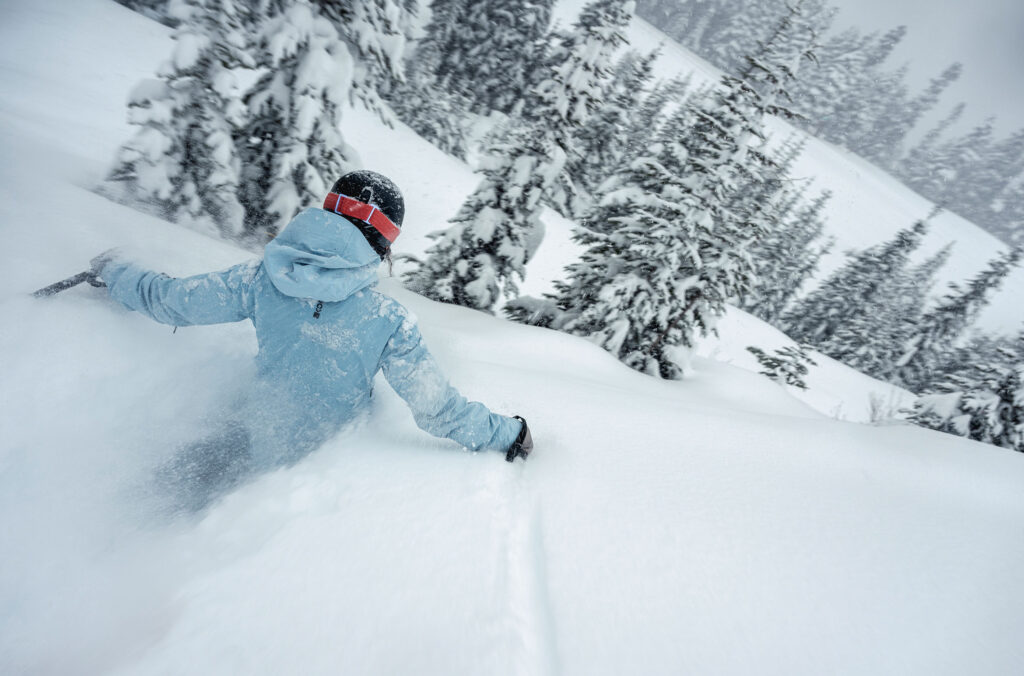I’ve got a slew of time-tested (read: ridiculously superstitious) methods for bringing on a good winter. Trust me. Among them (I won’t let you in on all my secrets) are flushing ice cubes down the toilet, sleeping with my pyjamas inside out and screaming snow into the freezer on a daily basis.
The latter tends to startle my roommates, which is an added bonus on top of the reassurance that I’m fulfilling my duties of stirring up the winter stoke.

And this year, my methods may have paid off (to my roommates – you can thank me later). Much to my excitement, the words La Niña have recently been spoken by meteorologists and appeared in weather and news headlines, which we hope means snow is coming!
According to the latest report from the World Meteorological Organization (WMO), there is a 60 per cent chance La Niña will develop this summer and continue into winter 2024/25. Adding to my already premature anticipation, when I got this news, I was over-the-top excited. But why am I jumping out of my seat for a weather phenomenon which translates to the little girl? Let me explain.
What is La Niña?
La Niña is a weather pattern that is characterized by colder than normal waters in the tropical Pacific Ocean, which has an effect on the weather all over the world.
The phenomenon was given its catchy name by Peruvian sailors who, in the late 1800s, noticed an unusually warm ocean, dubbing it El Niño. This translates to the little boy in Spanish and denotes the Christ Child because it happened right around Christmas. Naturally, when they observed colder than average ocean temperatures, they dubbed it La Niña, which means the little girl.
Both of these weather patterns are caused by variations in ocean temperatures in the Equatorial Pacific and are opposite phases of the broader El Niño-Southern Oscillation (ENSO) cycle, with La Niña referred to as the cold phase and El Niño the warm phase. When La Niña occurs, strong trade winds push warm surface water to the west, causing deeper, colder water to come to the surface in the east, displacing the jet stream northward.
This has different effects on the weather depending on where you are in the world, but for western Canada, La Niña means increased precipitation and colder temperatures, and up here in Whistler that means snow.
How Much Snow Are We Talking?
While a La Niña winter isn’t an absolute guarantee (this is Mother Nature after all), there are plenty of signs that point to a good winter when she comes around.
In the 1973/74 season, when La Niña came through, Whistler Blackcomb set their monthly snow base record of 504 centimetres (198 inches / 16.5 feet), which still holds to this day. More recently, we’ve seen La Niña years in 2009/10, 2010/11, 2011/12, 2016/17, 2017/18, 2020/21, 2021/22 and 2022/23. During the last fifteen years, the top four snowiest winters have been La Niña years.

When Will the Snow Come?
Once again, the science isn’t exact, but let’s look at some averages. We took the snowfall for each month for the last ten years to see which months are the snowiest in Whistler.
Top 5 Snowiest Months in the Last 10 Years
- January Average: 245 cm
- December Average: 216 cm
- November Average: 178 cm
- March Average: 177 cm
- February Average: 132 cm

Over the past ten years, Whistler Blackcomb has received an average of 10.6 metres (34.8 feet) of snow during the winter season (November to May). Remember, if you’re coming for some spring skiing, those earlier winter months are setting quite the stage, but March is still a snowy time for us here in Whistler.
Top 5 Snowfalls in the Past 10 Years
- January 2020: 477 cm
- January 2018: 379 cm
- December 2018: 373 cm
- November 2017: 366 cm
- January 2021: 340 cms
It’s worth noting that all five of the top snowfalls (of the last 10 years) have been in La Niña years.

Whistler Blackcomb’s official Opening Day is November 22, 2024, and we can’t wait to get out there. Follow us @GoWhistler for announcements and use #onlyinwhistler to share your opening day stoke with us!
Book your next winter trip to Whistler now to secure the biggest savings of the season, with up to 65% off lift tickets and 40% off rentals. Stay longer, save more; book seven nights or more and receive a free $100 CAD Dining Voucher. Sign up to be a Rewards by Whistler.com Member and receive a FREE $50 CAD activity voucher on stays of 3+ nights.
Epic Coverage is included for free with the purchase of a day or season pass, so you can plan ahead with peace of mind.
Come experience Whistler Blackcomb’s extensive terrain and adventure at every turn to see why we're known as one of the best resorts on the planet. Secure your mountain getaway with Whistler.com for personalized service and the local knowledge of our Whistler-based team.


